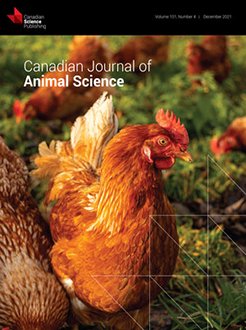A total of 320 one-day-old Cobb 500 chicks with an initial weight of 48.3 ± 3.3 g·pen−1 were assigned to four dietary treatments with eight replicates provided in three phases for 46 d. The treatments were fed as mash diets and included (1) negative control (NC) corn-soybean basal diet, (2) positive control (PC) basal diet with 30 ppm avilamycin, (3) basal diet supplemented with 1000 ppm red-osier dogwood extracts (RDE1), and (4) basal diet with 3000 ppm red-osier dogwood extracts (RDE2). Results showed reduced jejunal crypt depth in RDE1 and increased villus:crypt ratio in groups (either RDE1 or RDE2) (P < 0.05). Cationic amino acid (AA) transporter mRNA abundance was decreased (P < 0.05) in RDE1, RDE2, and PC treatments, but peptide and neutral AA transporter mRNA abundance were higher (P < 0.05) in RDE2 compared with NC. Apparent ileal digestibility of crude fat was increased in RDE2 and PC compared with NC, whereas AA digestibility was greater in RDE1, RDE2, and PC (P < 0.05). In conclusion, red-osier dogwood had no effect on growth performance, improved the intestinal health and function of broiler chickens, and had no detrimental effects on meat quality.
How to translate text using browser tools
4 May 2021
Effects of red-osier dogwood extracts on growth performance, intestinal digestive and absorptive functions, and meat quality of broiler chickens
Marion K. Mogire,
Janghan Choi,
Peng Lu,
Chongwu Yang,
Shangxi Liu,
Deborah Adewole,
Argenis Rodas-Gonzalez,
Chengbo Yang
ACCESS THE FULL ARTICLE
It is not available for individual sale.
This article is only available to subscribers.
It is not available for individual sale.
It is not available for individual sale.
Broiler chicken
cornouiller stolonifère
digestibilité
digestibility
growth performance
meat quality
nutrient transporters





